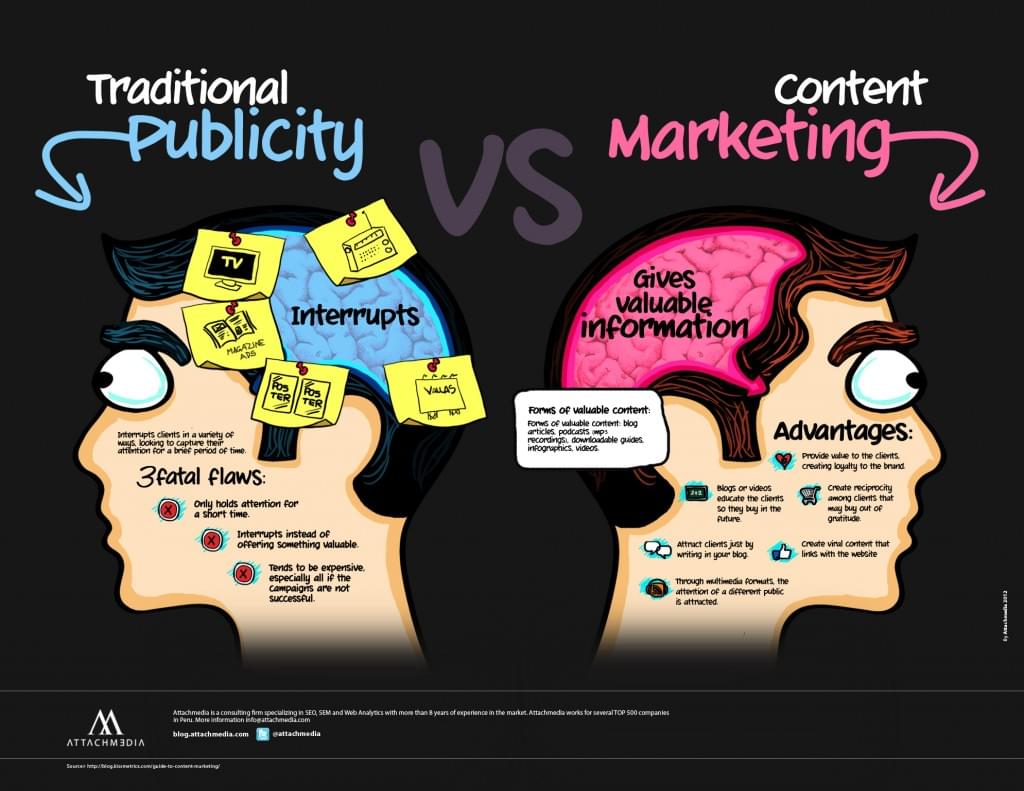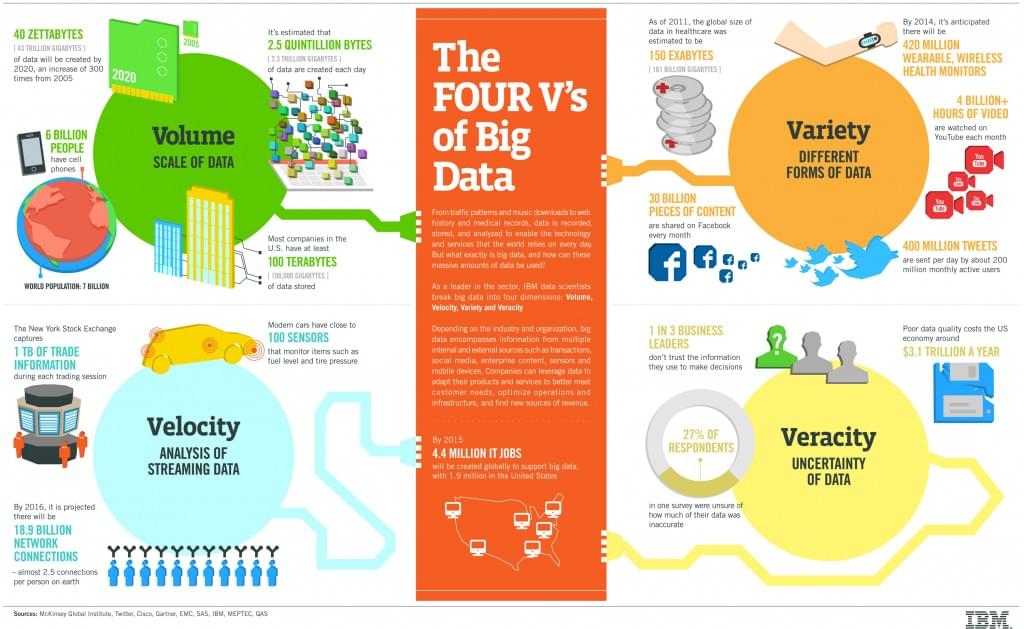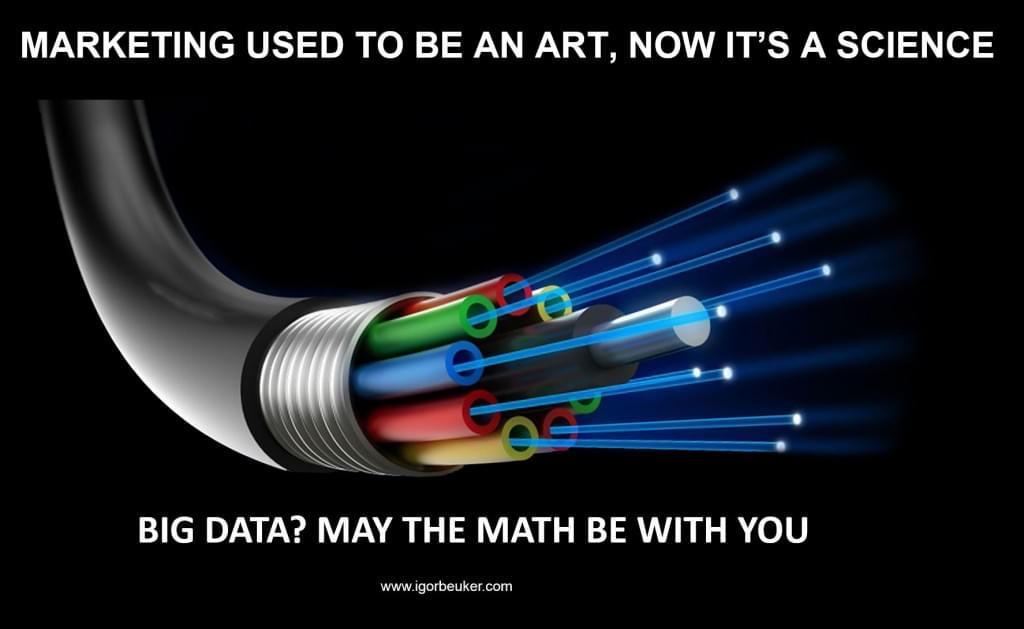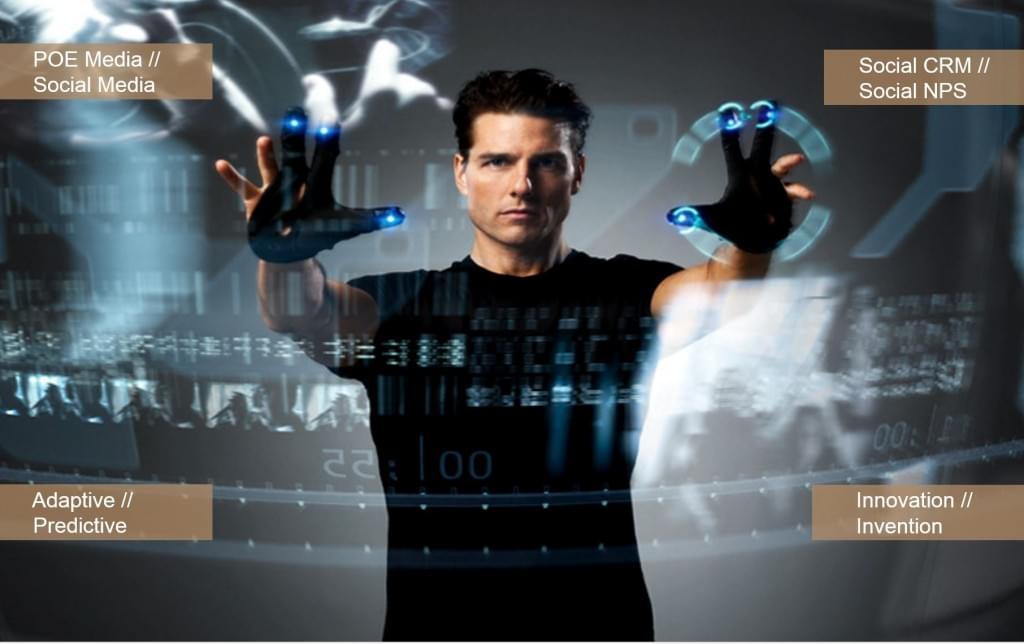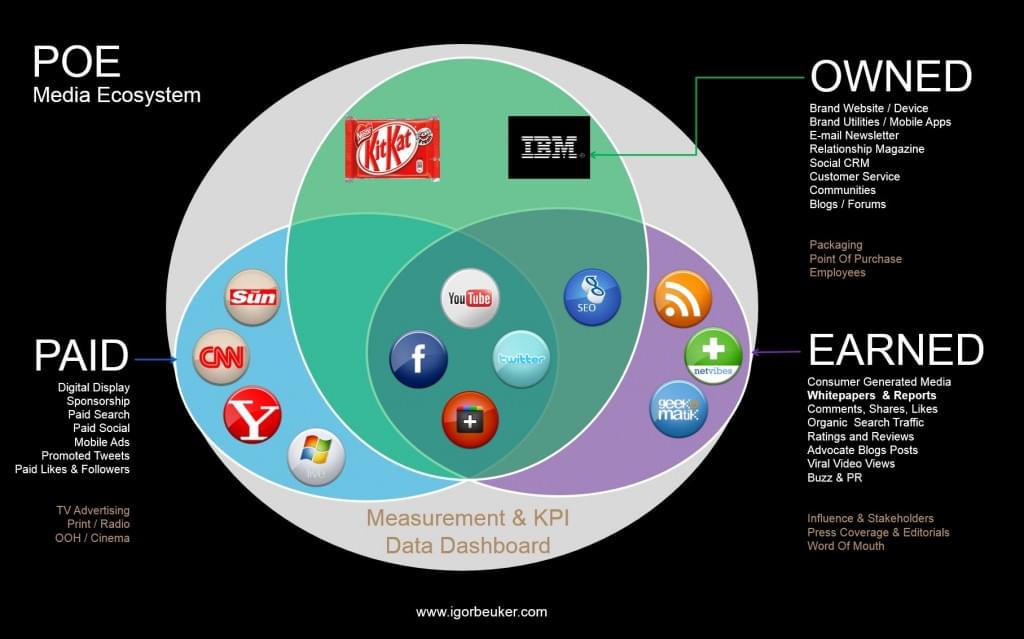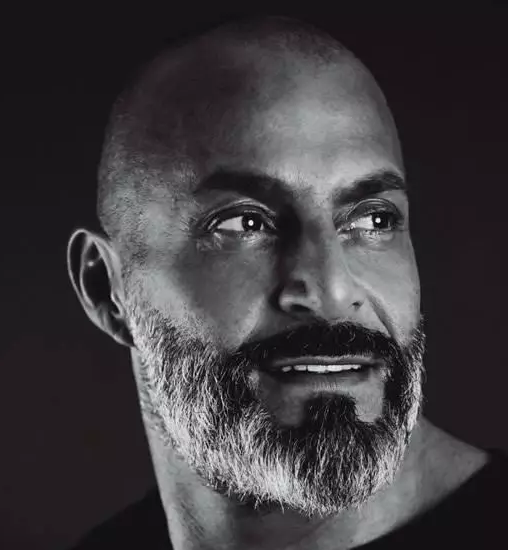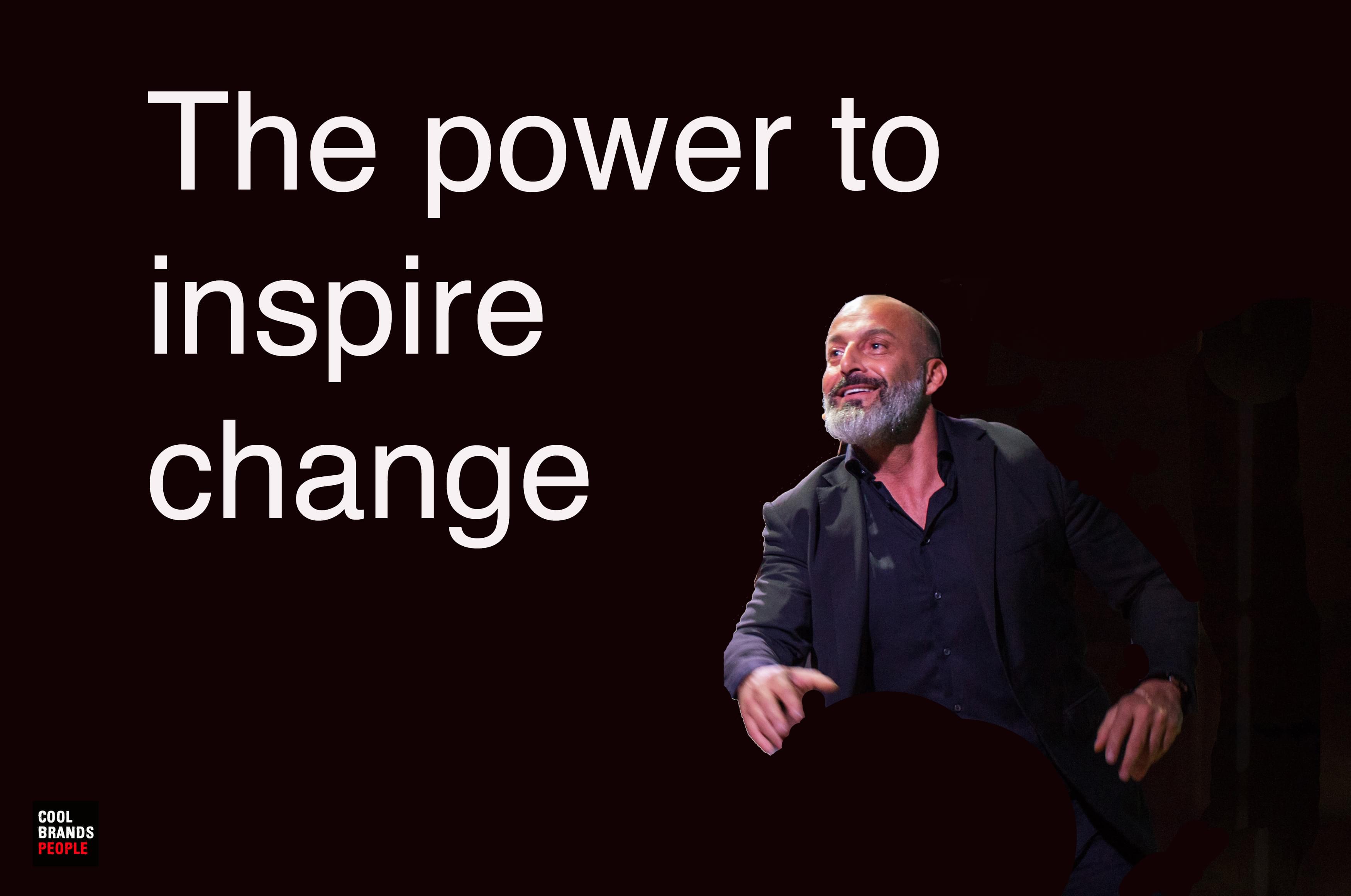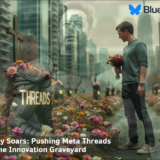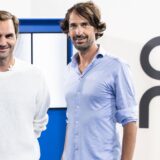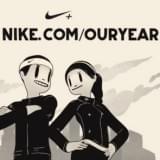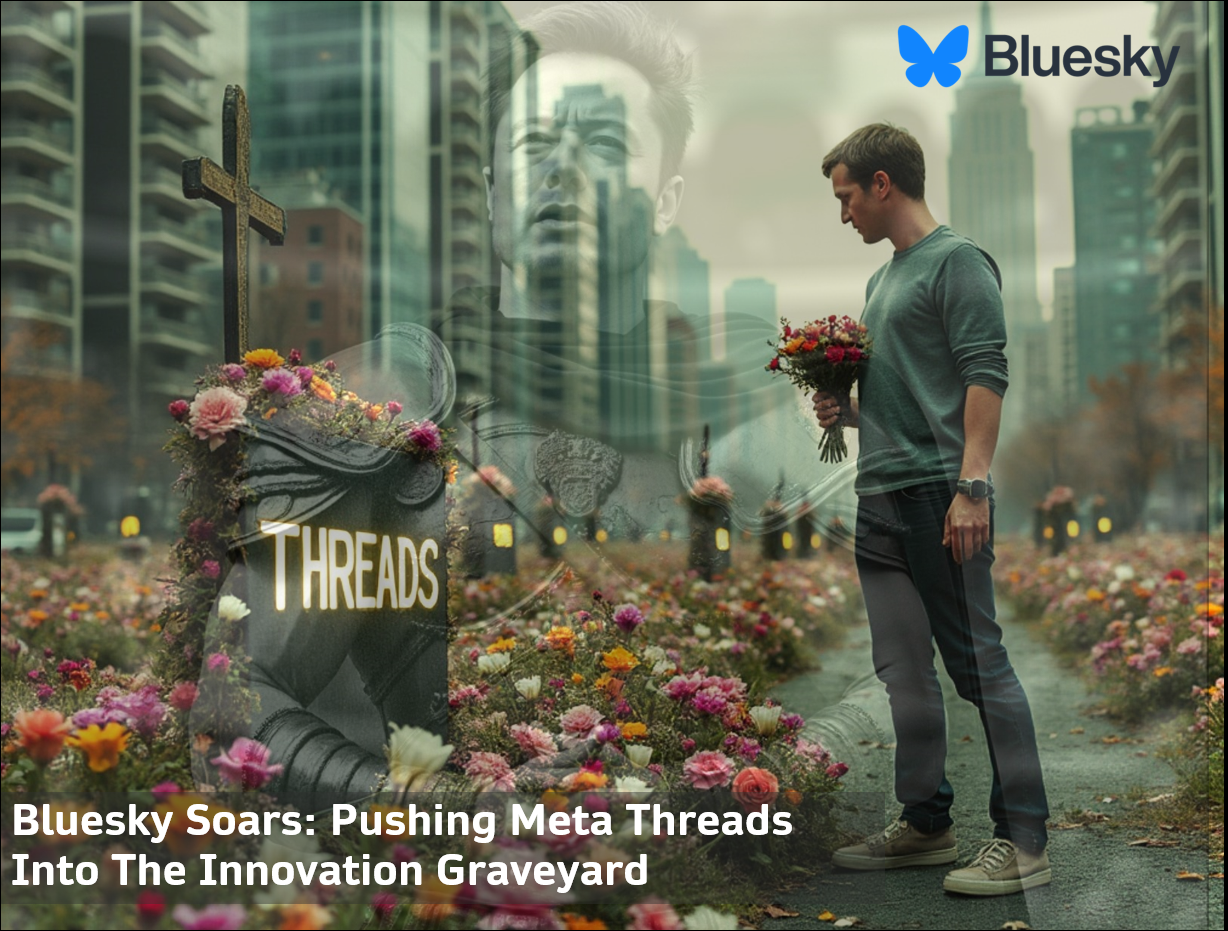Most CMOs and their agencies are still thinking in terms of advertising campaigns instead of data-driven integrated digital marketing programs.
Mad Men CMOs. We hear them roar on a quarterly, monthly, or sometimes weekly basis, with something they want to promote. Indeed, via ad campaigns.
The digital marketing era, however, allows CMOs to flip that model around and say: For almost anybody, there is something about ‘what we have to offer’ that should be connecting to them.
Atomic and Molecular Content Marketing
What digital offers CMOs is to have something for everybody in the target audience. How? By using the data that the CMO has about an individual in a particular moment, all can be targeted because digital tells you about the search terms that the consumer used or the page on your website where the consumer has just been browsing.
Same for the consumers’ browsing and previous buying behavior or their registered areas of interest; Actionable insights that will offer CMOs the perfect opportunities to pull them gently through their funnels, towards trial, loyalty and advocacy. All moments that can be coined by following the data.
Now add the consumers’ social media savviness. Almost all consumers will have had social engagements with your brand before they really connect to it, so you can categorize each of them differently and have something for each of them.
Compare it to fully personalized e-mail messaging, tailored recommendations, or super-targeted social CRM. Indeed, data-driven digital marketing helps CMOs to transform their brands into the Amazon.com way.
Now, this digital approach means that you as CMO will need to be having something for each of your individual consumer. Meaning, you will have to switch from the one big ad campaign with ‘one offer fits all’ towards agile, atomic and molecular content marketing.
In the era of digital marketing, you will need to create atomic content. It could mean having a pool of 100 pieces of content or 100.000 variants in your offers. So forget about the linear pushing out of 1, 2 or 3 messages.
Today brands can still buy media, but they can no longer buy attention. They have to earn it.
Basically, there is no way out. Because you can bet your butt that most of your competitors will be taking this approach. Certainly, the new disruptive players AKA the outsiders that will be entering your industry from your ‘dead angle’ to shake-up your marketplace will. Just think about Uber, Tesla, Airbnb, and other disrupting forces.
Digital marketing is a very different model from traditional advertising. The adjustment that is needed to succeed in digital is to unlearn old thinking patterns and to relearn new ones.
By old, I mean patterns such as:
– What should our next campaign be and what should we promote?
– Okay, let’s work with our agency that will eventually come up with a TV campaign, again.
– Let’s come up with a target group of customers.
– Go out and ask our media agency to buy as many possible GRPs, so that we can push this campaign to our targets.
What CMOs Should Unlearn and Relearn
You need to let go of what you learned about marketing 20 B.D. (20 years Before Digital). Believe me or not, Iam 44, pretty ‘old skool’ very ‘old skooled’ in marketing and media. And yes, I am proud to have such a solid foundation to build upon, because it enables me to build bridges that are closing the gap in this marketing revolution.
Digital forced me to unlearn and relearn quite a few things. But I loved the opportunity since digital offers many smarter methods and mechanisms than traditional marketing.
For digital, however, a different mindset is needed because due to all the disruptive technologies the only constant in marketing will be change. It has become a perpetually ongoing process of unlearning and relearning.
What is the main impact of technology and data in the digital world? In the digital world, all goes much faster. Way faster than marketers could have ever imagined. Digital also has a lot more complexity, its cycle time is much faster, and it is all data-driven.
Modern marketing is to be compared to agile development in software, where you’ve got fast turning iterative testing cycles. A similar approach the CMO (and his teams) should now be applying to their marketing discipline.
But what if you are the CMO that’s not very tech-savvy? Will, you end up in a museum near you soon? Not necessarily. You can fix all your data and tech problems by becoming best buddies with your CIO or CTO. So team up together!
What have I experienced so frequently in the last 2 decades at leading global brands? They all have the exact same particular stumbling blocks and challenges that only the CMO can actually create a workaround for, and that solution is called ‘big data.
Just start with the data and the discovery. Envision that you’ll one day have that stunning integrated customer data warehouse. Believe me, this dream can take many years for brands to put together. But you will have to.
Remember Noah? He built his ark before the flood. And you should too because flood is coming. A mega Tsunami that will shake out the non-data believers in disastrous ways.
Why the CMO Should Team Up with the CIO
The biggest challenge for CMOs here; Most brands are organized and shaped into silos. Meaning ‘the must have’ integrated approach will never be achieved by them. From experience, it looks like brands will need a major shake-out at the top first.
Because having fresh, open-minded, nonlinear thinkers at the entire C-level suite is needed to make this transformation in the corporate world.
Data and technology can deliver all you need, however, a whole different DNA backbone is needed across all the company’s decision-makers. This transformation process should start at the CMO and CIO. When they join forces with one integrated target on their joined KPI and ROI dashboard, magic will happen.
The CMO and CIO together will be able to tilt and turn the whole company. I know, because I have helped to make it happen at several leading global brands.
The Steps to Make Data Work for You
When you start putting things together, be very aware that it is going to be hard, because things around you will keep moving and that it might take you years to put all of this together.
That’s why most of my keynotes are drenched in punchlines that stress a sense of urgency:
1. Start your big-data-driven, integrated digital marketing strategy tomorrow
2. Allocate the appropriate budget; hire skilled people and get a very advanced tech stack
3. Execute your program company-wide and with top priority
Remember that this post-digital revolution era is about the survival of the fittest. Innovate or die.
For the brands that don’t start now, it will simply be too late. Disruptive, data-driven players will demolish your company, without you even knowing what hit you.
To make it happen, CMOs should think about a limited range of actions that are at the highest value for a particular range of segments:
1. What is the data we need just for that? Can we create a lightweight way of bringing that together?
2. Organizational challenges to getting people to work together in integrated ways. Because so much of this now is about the customer journey, where they are going to touch the mobile site, Google, laptop, looking at reviews in social media, talking to customer service, going to a store, it’s all one journey now.
3. Today brands have to be able to look at that journey in its totality. Get people to work together and acknowledge the fact that channels are all going to have different roles. Orchestrating this part of integrated digital marketing, that is the role of the CMO. He should lead the company towards that, if he doesn’t his brand will be a dead man walking in the coming 5 years.
4. Working through what it takes to test and learn? I’ve seen a lot of brands saying: “Well we don’t have the budget in order to do that many variations of our web landing pages” or “We don’t really see how we could get approval that fast through compliance at our legal folks.”
Sorry that mentality will fail. Today it all starts with the CMOs attitude and leadership saying: “We are going to work this through and work together as a team to get these obstacles out of the way because it is imperative to get this done.”
As a digital marketing strategist/consultant, it’s interesting to have seen how many leading brands tend to focus on big tools and systems, and large-scale algorithm development way to early. At data-driven marketing – scoping the ICT architectures, infrastructures, and platforms – comes next.
Firstly CMOs need to realize that data-driven digital marketing is about making smart decisions. About being able to tackle organizational issues and process design.
So they will have to be ruthless about prioritizing: Which data streams do we really need and let’s focus on getting that together and work on that.
Secondly, from a design perspective: let’s get the right people in the room with the right incentives, so that they’ll work with shared common goals, where they can be in a setting that’s comfortable to work together. Where they’ve got the right project team, with the right leadership behind them, a leader that is supporting the fact that they are doing this instead of everybody going out working for themselves.
Thirdly, it’s about working together and getting through all the obstacles that hinder rapid cycle test and learn, accepting the fact that they will be constantly testing and improving things.
Prioritizing the data, getting the right people from different functions working together and working on that rapid-cycle test and learn, that iterative sense agile marketing of constant improvement.
Those 3 things are really what you should be trying to drive towards.
So when you are fit, mean, lean, and muscled, you can apply that to whatever challenge digital is going to throw your way.
And trust me, there is always going to be new digital stuff, because the only constant in modern marketing is change.
The Big Data Challenge for the C-level Suite?
I have been working with many senior leaders from different industries, helping them steer their way through some form of digital transformation. CEOs need to show strategic advantage towards their shareholders. With CMOs that need to outgrow their competitors in new markets. And with CIOs that have to defend their firms against disruptive new players.
There are certain patterns that I see in terms of how senior leaders need to recalibrate their mindset. One of the first things is recognizing that digital isn’t just this added thing. It’s not just one more channel! It’s different and complex.
It’s about changing the way you operate because it is about using data, faster cycle times, and more interactivity with more empowered customers through many more touchpoints than ever before. This will change a lot of what’s going to happen underneath that senior leader.
So one of the first things senior leaders need to do is to get out there and see what people are doing more often. Too often people are in their office, very internally focused with all the complexity of their calendars and meetings.
The only way is to get out there for yourself, look at how consumers use Facebook in your retail stores, and ask people whether your product or service is good. Or do that on a much larger scale with a retail intelligence platform like Roamler.
To be bold, every brand worldwide should already have launched a platform like My Starbucks Idea. It harnesses and leveraged customer feedback brilliantly toward open innovation for 5 years.
The second thing most important for the CMO is to look at your teams and get your teams to work together in a more cross-functional mode. Setting the expectations, that is going to have to be a more team-oriented approach towards problem-solving, towards getting stuff out the door, towards hastening cycle times.
So being the senior leader, you’ve got to think: “What are the things that are preventing my channels or my product teams from working together?” and “What can I do to be a role model or to change the incentives to solve the problems in a more integrated way?”
The third thing I see is asking for more of the data than you have. Recognizing how much more the data is going to drive a lot of the decision-making.
Acknowledging that many of the ways you handle customers and many value-added services could be based on data. Or should it be based on data: Like recommendation engines, for example?
Data Will Drive Increased Value and ROI
CMOs will have to challenge their teams; it’s not just “What is our product strategy or customer service strategy.” It’s about asking: “What is our data strategy? How are we getting more information about our customers? How are we going to use that information to drive value and maximize our ROI?”
The key question about data-driven marketing is: “Is that going to lead our customers to do more business with us so that we can gather more information back?”
Information in data is going to be a critical source of advantage, pointing your spotlight on how your organization is going to compete to get the best data because that will be driving your actionable insights.
That’s a different perspective when many senior execs realize they must take it daily.
My Opinion
CMOs that will stick to traditional advertising campaigns and don’t take the data-driven digital marketing program approach now, will miss Noah’s ark. So their companies will drown in the flood.
CMOs that see the urgency of leveraging big data should be in the lead to transforming their brand towards data-driven, digital, integrated marketing.
To achieve success, CMOs will need to work together much closer with their CIO and steer their (and other teams within the company) towards integrated KPIs and targets.
Data-driven digital marketing needs an agile approach, like software development, with fast iterative projects and atomic molecular content marketing programs.
Big data will help CMOs towards:
A. Adaptive (liquid) media planning that will increase the ROI on their media investments significantly.
B. Predictive modeling and marketing. With special powers to see into the future and predict consumer behavior.
C. Last but not least, data-driven digital marketing will make your content marketing and messaging fully personalized, with tailored recommendations, including super-targeted social CRM.
All together, it will bring CMOs the ARPU-driven predictability of Amazon.com
What About You?
What keeps you awake when it comes to data-driven, integrated digital marketing? I’d love to read your feedback in the comments below.
Go Beyond Mainstream Media & Big Tech –
Get Access To My Uncensored Voice of Reason
We all know the mainstream media is often full of propaganda and bribed journalism. Big Tech makes it even worse with its content censoring, fake fact-checkers, and fading social channels to black. Should I add #fansonlease, walled gardens, and squeezing artists like lemons to the toxic social media list?
Don’t miss out! Get Math Man Magazine and my uncensored voice in your mailbox twice a month. 100% free! In my newsroom, live-on-stage action, podcasts, interviews, and more.
Read my recent article in Rolling Stone magazine about cause artists and athletes.
About the Author
In the spotlights, Igor Beuker is a top marketing innovation keynote speaker and futurist known for his foresight on trends and technologies that impact business, economy, and society. Behind the scenes, a serial entrepreneur with 5 exits and an angel investor in 24 social startups. Board member at next-level media firms, changemaker at Rolling Stone Culture Council, Hollywood sci-fi think tank pioneer, award-winning marketing strategist for Amazon, L’Oréal, Nike, and a seer for Fortune 500s, cities, and countries.
Related Posts
MONTHLY MEMBER SPECIAL


